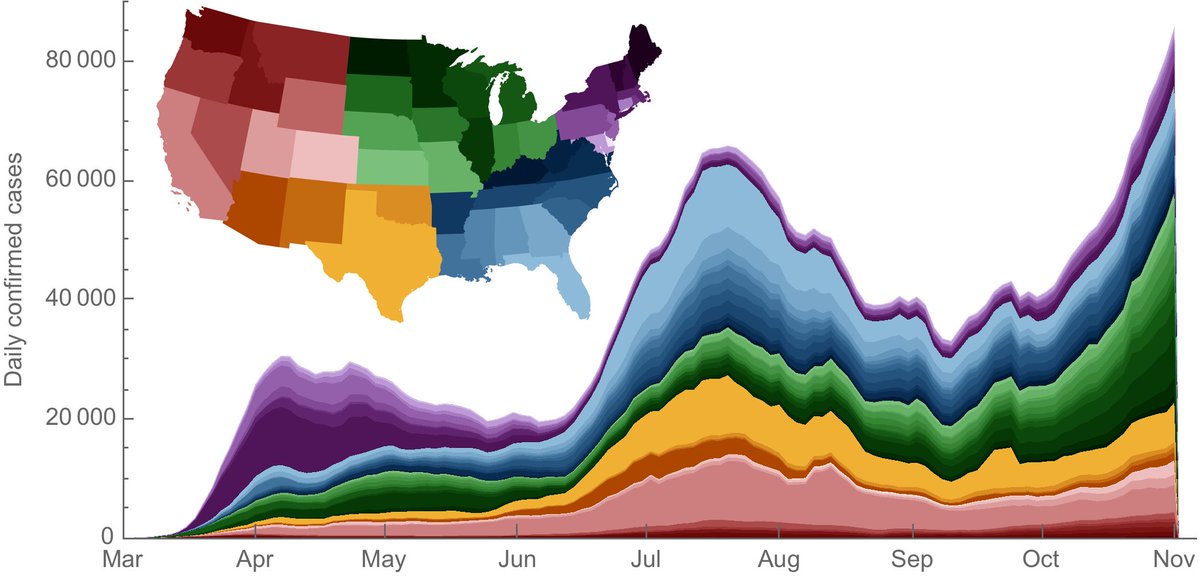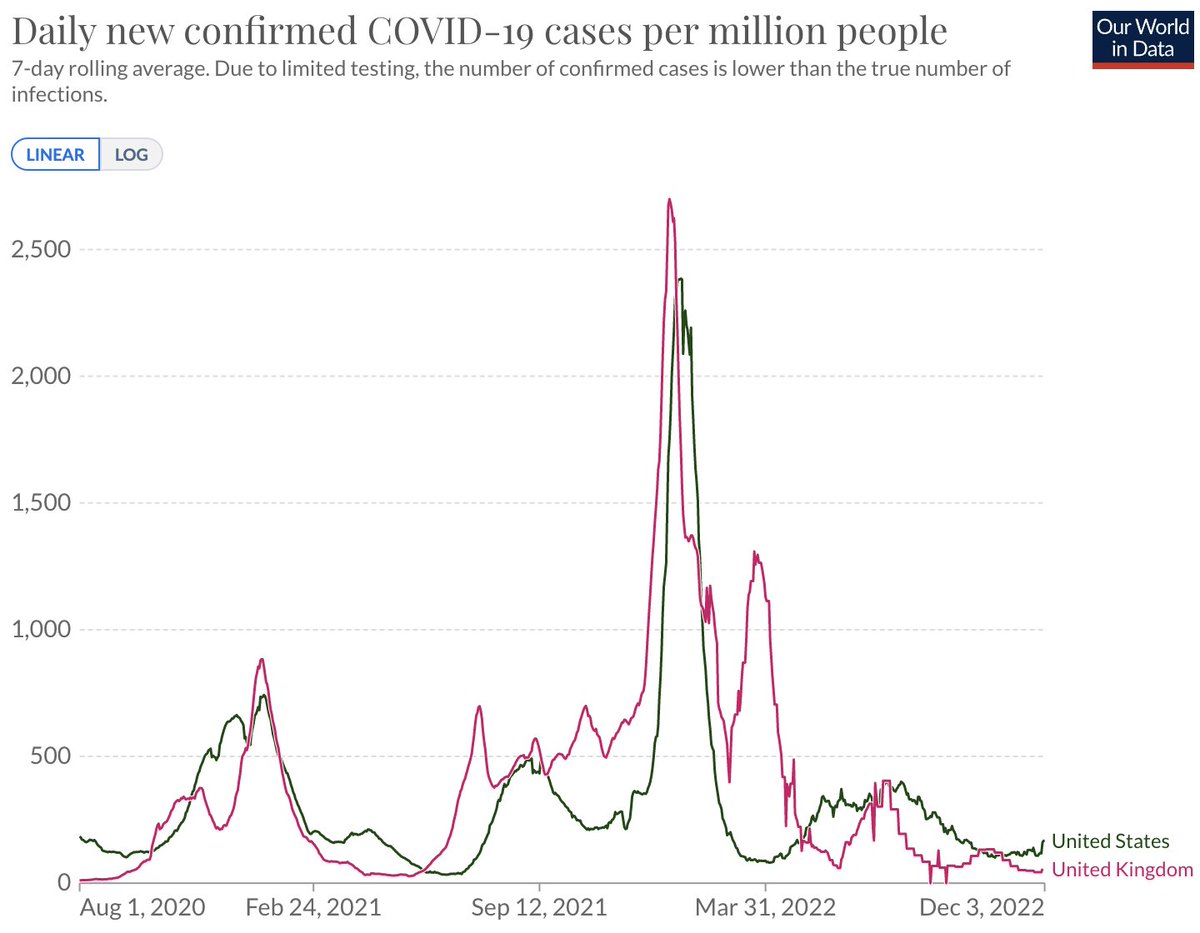I know that everyone has been (justifiably) distracted by other things, but the #COVID19 epidemic in the US is looking pretty dire with 125,552 confirmed cases reported Friday by @COVID19Tracking. 1/10
https://twitter.com/COVID19Tracking/status/1324874304379518977
Please consider this somewhat of a follow up to the thread two weeks ago on circulation patterns across states. 2/10
https://twitter.com/trvrb/status/1318215793352474629
Confirmed cases have continued to tick up across the US, though with the Midwest and Mountain West contributing to most of the recent increase. Data from @COVID19Tracking. 3/10 

If we look across states and plot confirmed cases on a log scale we can see a steady linear-on-a-log-scale trend in the past 4-8 weeks across most states. This pattern is indicative of exponential growth. 4/10 

Exponential doubling of COVID-19 is proportional to the instantaneous reproductive number Rt at a particular point in time. If Rt is greater than 1 then the epidemic is growing, if less than 1 it's shrinking. In the following I plot Rt estimates from rt.live. 5/10
Broadly, Rt varied widely across states in May-Aug corresponding to differing societal behavior and state-level "reopening" policies, but during Sep and Oct states have largely equilibrated in terms of Rt. 6/10 

Notably, 49/50 states are currently estimated to have Rt > 1 and in 40/50 cases Rt is estimated to be larger on Oct 28 than on Oct 14. 7/10 

This indicates that the current surge has no evidence yet of cresting. It's exponential "velocity" is the same or greater than two weeks ago; we've not yet seen signs of deceleration. 8/10
I've written previously about the dynamic relationship between COVID-19 cases, deaths and societal response (
https://twitter.com/trvrb/status/1284255564545982464) as well as the effects of relatively small levels of population immunity in the presence of mitigation (
https://twitter.com/trvrb/status/1291860659118804992). 9/10
I expect both to play a role in countering the current surge, but I won't hazard a guess at this moment as to when this occurs and what we eventually suffer in terms of daily case load. 10/10
• • •
Missing some Tweet in this thread? You can try to
force a refresh












